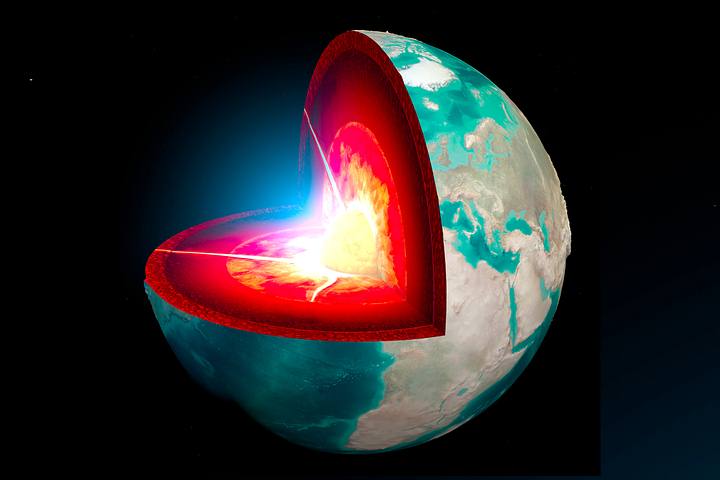Our planet’s inner solid core is barely a billion years old, says a new scientific study.
Earth is like a multi-layered cake. It has a solid outer crust, a viscous mantle, a liquid outer core, and a solid inner core. The latter, deep down, is slowly growing as the molten iron cools and crystallizes. This process helps set the outer liquid core in motion, which in turn creates the magnetic field that surrounds the planet and protects it from cosmic radiation.
In other words, the inner core is very important.
However, not much is known about the history of this 2,442 kilometer diameter iron sphere. Estimates of its age range from 500 million to 4 billion years, almost as old as the Earth itself, which is 4.5 billion years old.
Now researchers have squeezed a tiny piece of iron between two diamonds, then shot it with lasers. In this way they arrived at a new estimate of the age of the nucleus: from 1,000 to 1,300 million years, a date that coincides with a measurable strengthening of the magnetic field that occurred at that time.
“The Earth is unique in our solar system and that is due to its magnetic field, which is why it is habitable,” says study author Jung-Fu Lin, a geoscientist at the University of Texas at Austin. “Eventually, our results could be used to find out why other planets in our system do not have magnetic fields.”
The geodynamo
The Earth’s magnetic field is driven by what scientists call a “geodynamic.” This is the movement of the iron-rich outer core, which transforms the planet into a giant magnet.
The geodynamic is responsible for the magnetic north and south poles, as well as for the shield that protects us from charged particles from the Sun and prevents them from starting the atmosphere.

Part of the movement of the inner core is dependent on heat – a phenomenon known as a “thermal energy source.” As the core cools, it crystallizes from the inside out. This crystallization process releases energy that causes movement in the still liquid outer core.
Lin and his team intended to use experimental evidence to locate the energy from each of these sources. Well, knowing the amount of energy would allow them to estimate the age of the inner core.
To do this, the researchers recreated the conditions of the core on a tiny scale. They heated a piece of iron just about 6 microns wide (about the same size as a red blood cell) to a temperature of 2,727 degrees Celsius and then crushed it between two diamonds to equalize the extreme pressures of the Earth’s depths. They then measured the conductivity of the iron under these conditions.
A young core
This conductivity measurement allowed the study authors to calculate the thermal cooling of the core that is available to drive the geodynamic. So they found that it produced a power of about 10 terawatts from cooling – about a fifth of the amount of heat that the Earth dissipates into space from its surface (46 terawatts).
“Once we calculated the amount of energy lost, we were able to estimate the age of the inner core,” Lin explained. This is because the ratio of energy lost indicates how long it would take for a solid mass the size of today’s nucleus to go from solid to molten iron.
“That is equal to between 1 and 1.3 billion years, which suggests that the nucleus is relatively young,” Lin concludes.
The details of the investigation have been published in Physical Review Letters.
Source: Live Science

















